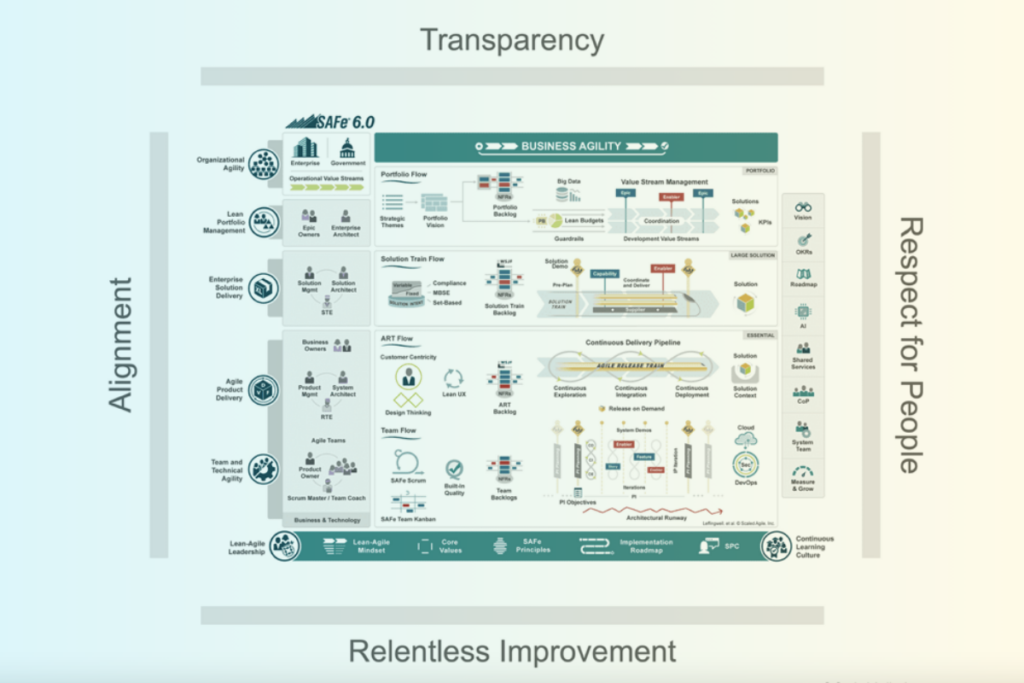Table of Contents
ToggleSAFe is based on 4 core values, and it is important to understand these before exploring the concepts. For SAFe to be effective, the four Core Values of alignment, transparency, respect for people, and relentless improvement must be upheld.
1. Transparency
2. Flow
3. Relentless improvement
4. Culture
5. Program execution
The Correct Answer is
1. Transparency
5. Program execution
Explanation
1. Transparency
This value is crucial in SAFe and emphasizes the importance of open, honest communication and visibility into the work and processes within an organization. Transparency is key for building trust, enabling better decision-making, and ensuring alignment across various teams and levels of the organization. It allows all stakeholders, from team members to top management, to have a clear understanding of the progress, challenges, and successes of ongoing projects.
2. Relentless Improvement
This value emphasizes the importance of continuous, non-stop improvement within an organization. It involves constantly seeking ways to improve processes, enhance skills, reduce waste, and innovate. In the context of SAFe, relentless improvement is about evaluating and enhancing both the technical aspects of development and the broader organizational processes. This continuous drive for improvement is key to maintaining agility and responding effectively to changes.

The four Core Values of the Scaled Agile Framework (SAFe) – alignment, transparency, respect for people and culture, and relentless improvement – are indeed central to its methodology and philosophy. Let’s delve deeper into each of these:
3. Respect for People and Culture
In the context of SAFe, alignment refers to ensuring that everyone in the organization, from top-level management to individual team members, understands and works towards a shared vision and common goals. This is especially important in large organizations where multiple teams may be working on different aspects of a project. Effective alignment helps in coordinating these efforts and ensuring that all activities contribute towards the strategic objectives of the organization.
4. Transparency
This value emphasizes openness in the work process. Transparency in SAFe means making work and processes visible to all stakeholders. This visibility allows everyone involved to have a clear understanding of project progress, risks, and impediments. It fosters trust among team members and stakeholders, facilitates better decision-making, and enables a more responsive and adaptive approach to changes.
5. Respect for People and Culture
SAFe recognizes that a successful transformation requires more than just process changes; it also needs a cultural shift. Respect for people and culture emphasizes valuing individuals and the culture of the organization. It involves creating an environment where team members feel valued and respected, promoting a culture of collaboration and empowerment, and recognizing the human aspect of software development.
6. Relentless Improvement
This core value is about continuously seeking ways to improve both the process and the products. It involves constantly evaluating and enhancing the way teams work, the tools they use, and the quality of the output. Relentless improvement in SAFe also means encouraging innovation, regularly reflecting on practices, and learning from both successes and failures.

These core values play a crucial role in guiding the behaviors and decisions in an organization adopting SAFe. They help in creating a more effective, responsive, and agile enterprise, capable of delivering high-quality products and services quickly and efficiently.
